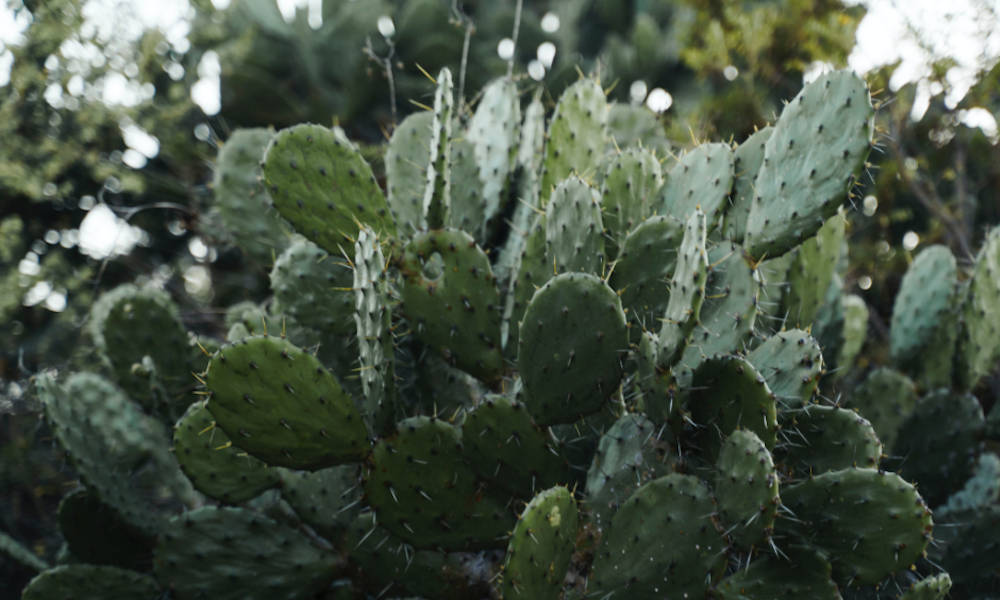
01 May We Love Leather Alternatives!
From leaves and mushrooms to plants more, an expanding array of innovative and eco-friendly leather alternatives exists. Leather manufacturers argue that cowhides are a byproduct of the meat industry and that synthetic alternatives are reliant on fossil fuels, while proponents of alternative leathers contest that the leather industry too uses fossil fuels and that 14.5 percent of the world’s greenhouse gas emissions are from livestock and feed production. For many, leather can never be truly sustainable or cruelty-free—it can’t be separated from its source, industrial animal agriculture. Luckily, there are several alternatives, some of which are purely synthetic, and other, newer bio-based and bio-fabricated materials. We’ll walk you through some of the different options and their pros and cons.
Synthetic Leathers
Synthetic leather, which might be labeled as “pleather,” “faux leather,” “vegan leather,” or “eco-leather,” is typically made of polyurethane, which is derived from petroleum, a non-renewable fossil fuel. Synthetic leather can be hazardous at each phase of its life cycle, from extraction to production, use, and end of life. Leather substitutes are made in a chemical-intensive process, using phthalates and other hazardous chemicals that can release toxins. Their lifespan is much shorter than hide leather, and they are not easily biodegradable. And plastic microfibers can be discharged from the fabrics during washing or disposal, leaching into waterways. Still, the downsides of synthetic leathers have become the target of the hide leather industry as they aim to rebrand leather as the more sustainable option. But does synthetic leather have a greater negative impact on the environment and human health than the industrial agriculture industry? It’s a difficult call to make. For those looking for a substitute for hide leather but aren’t convinced by synthetic leather either, there are some exciting new options.
Alternative Leathers
According to the Food and Agriculture Organization at the United Nations (2020), livestock emissions and petroleum-derived energy production account for about 14.5 percent and 66 percent of global manmade greenhouse gas emissions, respectively. In the face of this reality, a cohort of companies is developing a whole new kind of “leather” products.
One leather alternative is made from the Nopal cactus (also known as prickly pear). It’s free of toxic chemicals, plasticizers, and is partially biodegradable. It’s strong and guaranteed to last at least ten years, and it can be used for the same applications as animal leather. Cactus was chosen because it requires very little water and can grow in severely degraded soil where other crops can’t survive. When mature leaves are harvested, the plant continues to grow, so it can be harvested again and again over time.
Another is made from mycelium, the underground root system of mushrooms. Manufacturers feed mycelia cells sawdust and organic material, and they grow into a foamy layer. After harvesting, they compost the leftovers, process and dye the mycelia. They use green chemistry principles to process and finish the material, which is free of hazardous chemicals. The whole process takes just a few days, compared to the years required to farm cattle in order to make hide leather.
Yet another uses pineapple leaf fibers, an agricultural waste product. These fibers are dried naturally, purified, and turned into a leather-like material. However, like many of these biobased alternatives, some collections of pineapple leather are made with a coating of polyurethane to give the material durability. There are also bio-fabricated leathers, created by combining proteins with bio-based polymers at the molecular level. Compared to fully synthetic materials, these bio-alloys reduce fossil-derived inputs by over 50 percent.
Many of these alternatives haven’t been fully fine-tuned yet or scaled for mass commercial production. They’re not perfect materials, but they may offer a solution to some of the leather industry’s sustainability problems. Manufacturers of all kinds of “leather” can commit to continuously reducing negative impacts as they innovate and produce high-quality, high-performance materials.

